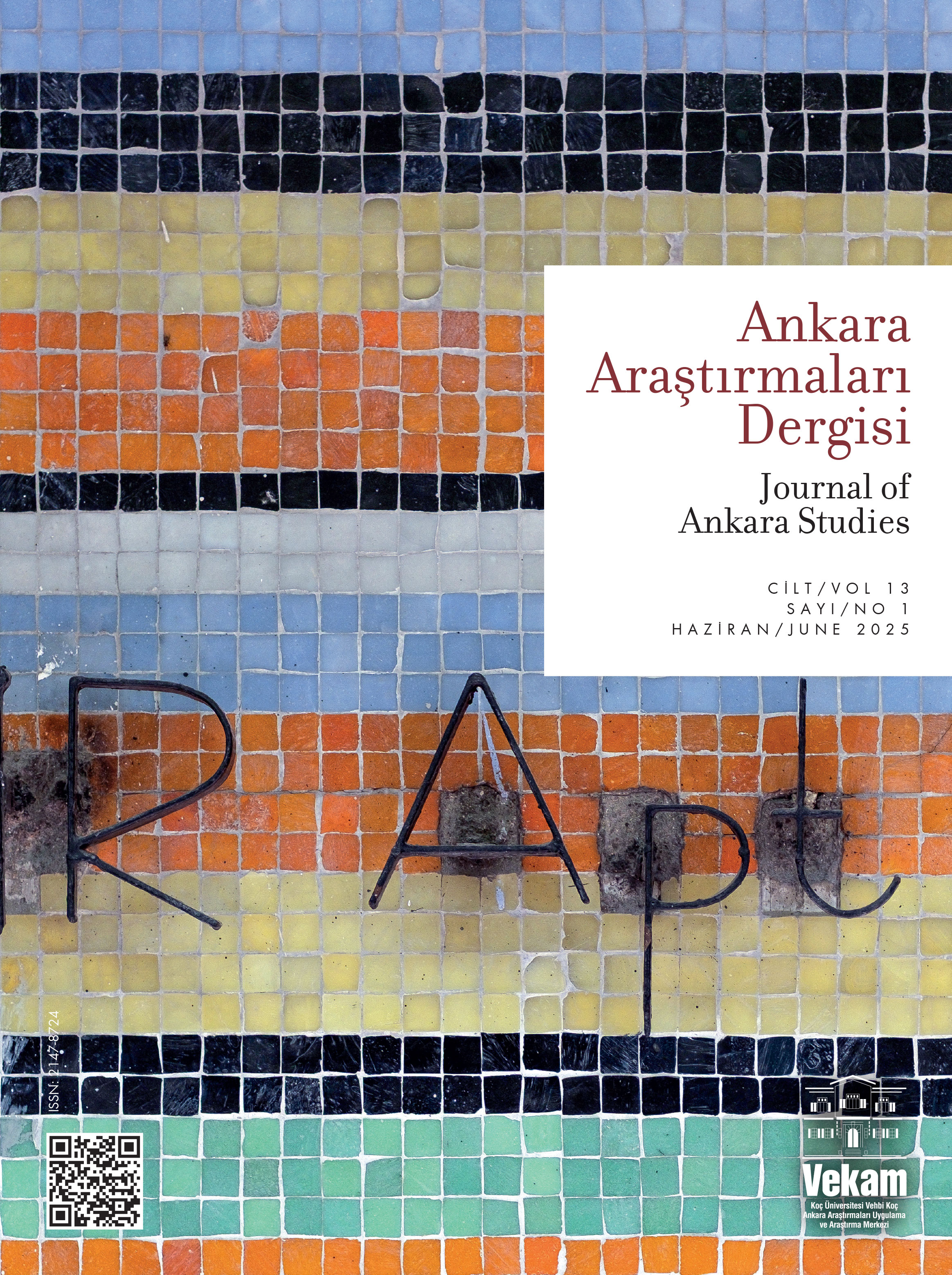Ulus Meydanı’nın Hikâyesi: Oluşum, Dönüşüm ve Değişim
Elif Selena Ayhan KoçyiğitBaşkent Üniversitesi, Güzel Sanatlar Tasarım ve Mimarlık Fakültesi, Mimarlık Bölümü, AnkaraBu araştırma bir kültürel miras alanı olan Ulus Meydanı’nın tarihsel süreç içerisinde oluşum, gelişim ve dönüşüm hikâyesi üzerine odaklanmaktadır. Makalede, tariflenen dönemlere ait değerlerin ortaya çıkarılması ve bu değerlerin zaman içinde yaşadığı süreklilik, değişim ve dönüşümü etkileyen ana faktörlerin belirlenmesi hedeflenmektedir. Böylelikle bu makale ile kentin önemli kamusal açık alanlarından biri olarak tariflenen Ulus Meydanı’nın güncel uygulamalar doğrultusunda kültürel niteliğini, özgünlüğünü ve bütünlüğünü kaybetme tehlikesine dikkat çekmek amaçlanmaktadır. Makalenin ilk bölümde, boş bir açık alan olarak Ulus Meydanı’nın tanımlamış olduğu bölgenin Roma döneminden itibaren günümüze dek kente entegre olma biçimi aktarılmış, zamanla bir meydan niteliği kazanmasını sağlayan tarihi süreç ve etmenler tartışılmıştır. İkinci bölümde ise 19. yy’dan itibaren, özellikle Tanzimat hareketlerinin yönetim yapısı ve kente olan etkileri sonucu başlayan meydanlaşma süreci detaylarıyla anlatılmıştır. Devam eden bölümlerde, Cumhuriyetin ilanının, Ankara’nın başkent olma sürecinin ve ideolojik yapının kent mekânına ve kentsel yaşama yansıması, Ulus Meydanı hikâyesi üzerinden tartışılmıştır. Takip eden bölümlerde, II. Dünya Savaşı sonrasında yaşanan politik, ekonomik ve sosyo-kültürel yapıdaki değişim, uluslararası ilişkilerin kentsel mekânın kurgusundaki rolü ve bu süreçte Ulus Meydanı’nın yeniden şekillenmesi incelenmiştir. Son bölümde ise, tarihi Ankara olarak tariflenen ve Ulus Meydanı ve yakın çevresinin de bir bölümünün dâhil edildiği bölgenin koruma ve yenileme planları doğrultusunda yeniden ele alınması incelenmiştir. Bu planlar meydanın korunması ve meydanı tarifleyen değerlerin sürdürülebilirliği açısından ele alınmıştır. Özellikle alanda uygulanan güncel müdahalelerin 2008 yılında iptal edilmiş olan bir yenileme planıyla yüksek derecede olan benzerliği ve bu projelerin alanın kültürel miras özellikleri üzerindeki olumsuz etkileri detaylandırılarak tartışılmıştır.
Anahtar Kelimeler: Tarihi kamusal açık alan, Kültürel miras, Kentsel koruma, Koruma amaçlı imar planı, Yenileme planı, Ulus Meydanı, AnkaraA Tale of Ulus Square: Emergence, Transformation and Change
Elif Selena Ayhan KoçyiğitBaşkent University, Faculty of Fine Arts, Design and Architecture, Department of Architecture, Ankara, TurkeyThis research focuses on the story of Ulus Square as a heritage place and its emergence, evolution and transformation through time. It is aimed to reveal the values that are ascribed to the area during the periods defined, and to determine the main factors that have affected how these values have been shaped over time. A particular emphasis has been placed on highlighting the vulnerability of Ulus Square in the face of current urban projects, and the risk of the area losing its cultural significance, authenticity and integrity as an important public open space within the city. In the first part of the article, the integration, starting from the Roman Period onwards, of the empty open space (corresponding to today’s Ulus Square) to the city is examined. Secondly, the emergence of the square in the early 19th century, and the subsequent acceleration of its development through the Tanzimat Reforms, is analysed in detail. In the following parts, effects on urban space and city life of several events and trends, such as the proclamation of the Republic, the declaration of Ankara as the capital and the ideological structure of the state is discussed through the story of Ulus Square. There is also consideration of the changes within the political, economic and sociocultural structure of the country after the Second World War, the impact of international relations on urban structure, and how the transformation of Ulus Square reflects these changes. The final section of the paper is mainly concerned with the role of conservation and renovation master plans on the continuity of Ulus Square. These plans are analysed regarding their impact on the square and the values attached to the area. The clear correlation between current projects and the renovation plan that was repealed in 2008 is particularly emphasised, and the negative impacts of these projects on the cultural significance of Ulus Square are discussed in detail.
Keywords: Historic public open space, Cultural heritage, Urban Conservation, Conservation master plan, Renovation plan, Ulus Square, AnkaraMakale Dili: İngilizce













